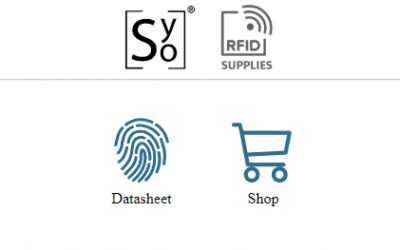Calculating the business case for RFID deployments is an excellent opportunity to dive into the challenges your business faces across its functions and operations.
Often throughout the process of collecting data for the business case, managers for the first time understand the complexity of digital transformation. Many business processes need to adapt or change to leverage the benefits of the investment. At this point, it also becomes apparent, which functions within the organisation can benefit from the adoption of the technology.
Calculating the business case will help to decide priorities and to define the roadmap for the implementation. Companies tend to focus on the elements of the business case with the highest contribution to the ROI for the first phase of the roll-out.
Fortunately, there are plenty of resources and tools available now to assist in the assessment, providing guidance and help. Many early adopters also released information and data about the impact the adoption of RFID had on their business. These data points can offer some guidance, but data should always be critically reviewed and analysed before being used in calculations.
Business areas to evaluate for your assessment
The image below shows the various inhibitors retailers face in their business. In most ROI calculations, we quickly determine that fixing the issue if either having too much or not enough inventory is sufficient to create a solid business case with a positive return on investment.
Inventory Intelligence
Retailers often struggle to know “what they have” and “where they have it”, lacking crucial information to efficiently manage one of the largest positions on their balance sheet, their inventory.
Lacking accuracy and visibility, merchandisers must use their experience and historical data to decide about the allocation of stock and appropriate stock levels. They also must take in consideration, that there is a high level of uncertainty in the data, leading to overstocking items to avoid stock-outs.
Inventory Intelligence provides the foundation to optimise the operating model, efficiently fulfil online orders and deliver real omnichannel capabilities.
Optimising availability
Retailers can pursue three strategies to maximise stock availability in store. Many chose to increase stock levels and add safety stock to ensure incomplete information won’t lead to lost sales. This approach is highly inefficient as the data has a high level of inaccuracy, and the unnecessary stock is a financial burden for the organisation. Towards the end of the season, retailers then need markdown stock, reducing margins.
Retailers can also try to use manual labour to improve their data quality and use employees to count and verify stock. Very few retailers do this as it is cost prohibitive, manual cycle counts are often still highly inaccurate, and sales associates should focus on helping customers.
The third and best option is, to automate the process, reduce the cost of labour and safety stock while working with highly accurate data automatically captured using RFID technology. This approach allows retailers to retain more stock in DCs and allocate it based on real-time data while maximising the availability of their SKUs.
Foundation for Omnichannel
Removing unnecessary safety stock from stores allows retailers to use their inventory more efficiently. Retail stores are inefficient distribution centres, relocating stock between stores or shipping items from the store are models many retailers implement. However, the most efficient handling of shipments to stores or consumers is from a DC.
High stock accuracy in stores also enables “buy online pick-up in store” (US) or “click and collect” (UK). This model is especially interesting, as it allows retailers to engage with their customers, allows customers to try items in-store and reduce costly returns. Costly not just because of the shipping cost associated, but also because of the time the product spends in transit. While customers visit stores, there is always an up- or cross-sell opportunity for the retailer to consider.
Proven ROI
RFID will reduce your stock levels, mark downs and labour cost. It is the foundation for implementing digital twins, omnichannel enablement and the increases conversion rates.
Identify and assess the following benefits for your organisation
Revenue Growth
- Better availability leads to improved in-store conversion, as customers find the products and sizes they are looking for.
- Enabling omnichannel with stock across the whole organisation allows to leverage stock efficiently
- Improved service levels in-store increase customer satisfaction and retention and directly impacts revenue
Margin Improvement
- AUR increases with a reduction in markdowns and a reduction in shrink
- Reduction of Safety stock
- Reducing labour cost with highly efficient and less labour-intensive stock takes. In most of our calculations, we always advocate investing these labour savings in improving customer service and experience further.

























